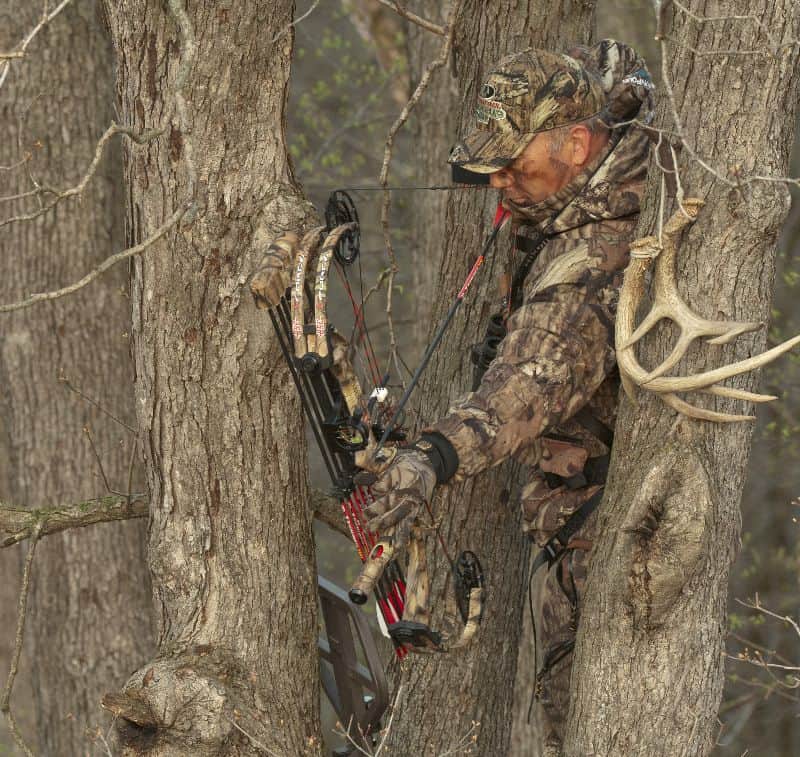Rather than clumping deep into the woods, try to set your stands 50-150 yards from a logging road, power right-of-way or field edge. Much of the walking to the stand will be quiet and easy and you won’t jump many deer. Use aerial photos to determine the best routes in and out.
After finding a potential tree, turn around and see where the wind will push your scent. If an old doe circles below your stand and catches a whiff she’s liable to stamp and blow for 10 minutes, ruining your hunt. It’s best when the wind drives your stink over a dead zone where few if any deer move—a pasture, river, rocky ravine, etc.
Don’t throw stands or steps or bang them around. Don’t talk or laugh loudly. Set up without spooking any deer that might be bedded or walking nearby.
Hang a stand where limbs, leaves, vines or a fork behind you break your silhouette. Sixteen to 20 feet high is about right.
Face a stand dead into the wind or at least quartering into it. You’ll see the most deer out front or off to the sides, and you’ll be well positioned to shoot.
A pole saw is a hassle to carry, but you need one to cut out stand spots and trim shooting lanes. Trim 3 or 4 lanes on the upwind sides of a stand. Drag away cut saplings and brushy tops so deer won’t smell your scent on them, and so they won’t block a buck’s approach into bow range.
Try to face a morning stand west and an evening stand east. With the sun at your back as you hunt, you’ll have great visibility and be hidden in shadows. You’ll also maximize the shooting light at dawn and dusk.
Use a climbing belt when setting steps and stands. Switch to a 4-point, full-body harness for hunting. No short cuts here, be safe!

